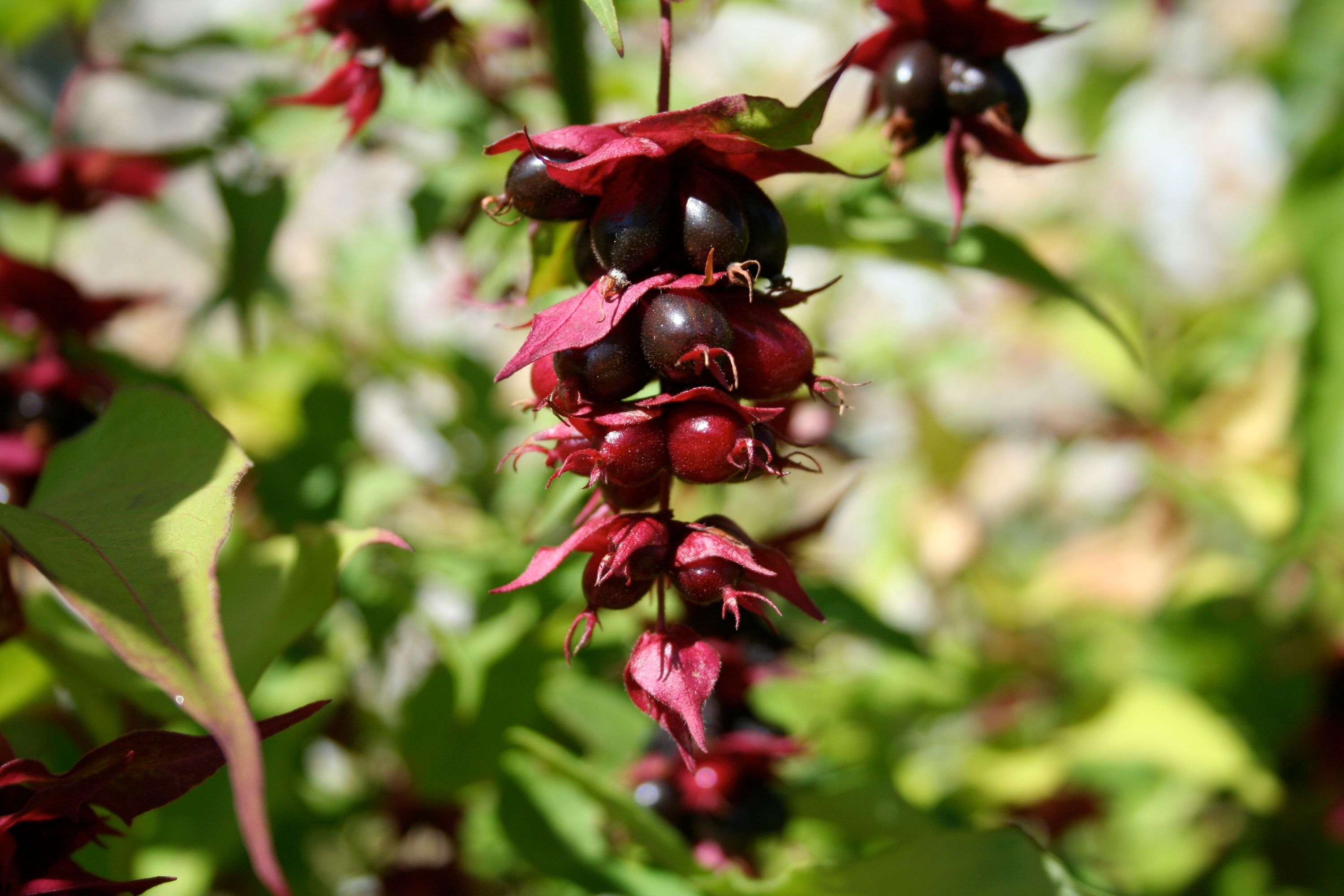Himalayan honeysuckle
(Leycesteria formosa)

Description
Leycesteria formosa, commonly known as the Himalayan honeysuckle, is a deciduous shrub native to the Himalayas and southwestern China. It is a member of the Caprifoliaceae family, which also includes honeysuckles and elderberries. This unique plant is often grown as an ornamental plant in gardens and is well known for its attractive flowers, berries, and foliage. In this article, we will discuss the botanical characteristics, growing requirements, and uses of Leycesteria formosa. Taxonomy Leycesteria formosa was first described by the Scottish botanist Robert Brown in 1821. The genus name Leycesteria is named after William Leycester, an English lawyer and botanist who lived in the late 18th century. The species name, formosa, means "beautiful" in Latin and refers to the attractive appearance of the plant. Botanical Characteristics Leycesteria formosa is a multi-stemmed shrub that can grow up to 3 meters (10 feet) tall and wide. The stems are hollow and have a distinctive purplish-brown color with white pith. The leaves are ovate to lanceolate, 10-15 cm (4-6 inches) long, and have serrated margins. They are a blue-green color on top and have a grayish-white underside. The flowers of Leycesteria formosa are tubular and hang in clusters from the branches. They are surrounded by deep red to purple bracts, which give them a striking appearance. The flowers bloom in mid to late summer and are followed by clusters of small berries. The berries are initially green but turn dark purple as they mature. They are edible and have a sweet, juicy flavor. Growing Requirements Leycesteria formosa is a hardy plant that can grow in a wide range of soil types. It prefers moist, well-draining soil but can tolerate some drought once established. It is also tolerant of a wide range of temperatures and can grow in USDA hardiness zones 7-9. This plant prefers full sun to partial shade and can tolerate some shade. It is best to plant it in a location that is protected from strong winds, as the branches can be brittle and break easily. Propagation of Leycesteria formosa can be done by taking stem cuttings in the summer or by sowing seeds in the fall. It is important to note that Leycesteria formosa can self-seed and spread quickly, so it may need to be pruned back regularly to control its growth. Uses Leycesteria formosa is primarily grown as an ornamental plant in gardens. Its attractive flowers, berries, and foliage make it a popular choice for borders, hedges, and woodland gardens. It can also be grown as a container plant on a patio or balcony. In addition to its ornamental uses, Leycesteria formosa has some medicinal properties. The leaves and stems of the plant contain compounds that have anti-inflammatory and anti-cancer properties. The berries are also high in antioxidants and have been used in traditional Chinese medicine to treat a variety of ailments, including coughs, colds, and fever. Conclusion Leycesteria formosa is a unique and beautiful plant that has a lot to offer in terms of ornamental and medicinal uses. Its striking flowers, berries, and foliage make it a popular choice for gardeners, while its anti-inflammatory and anti-cancer properties make it an important plant in traditional medicine. If you are looking for a hardy, versatile plant to add to your garden, Leycesteria formosa is definitely worth considering.
Taxonomic tree:







